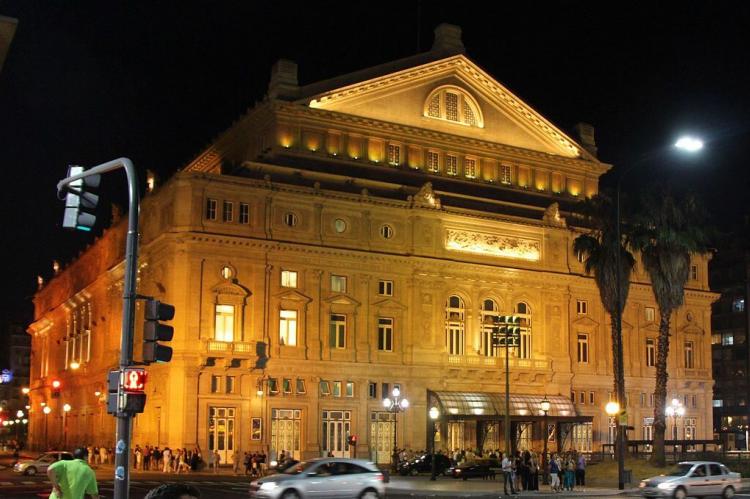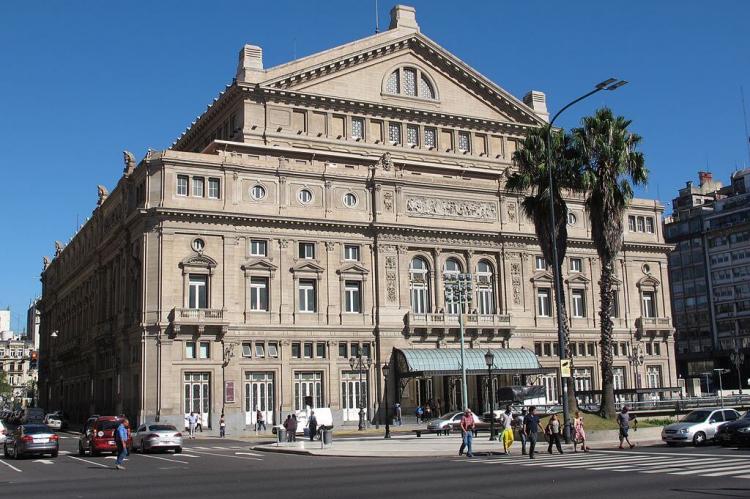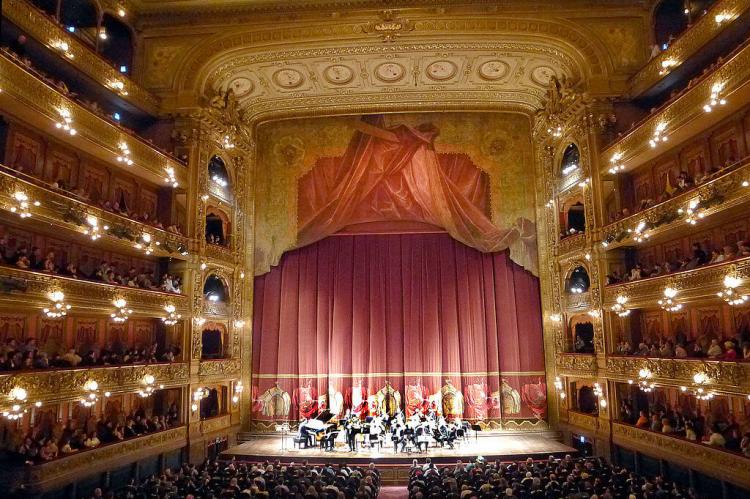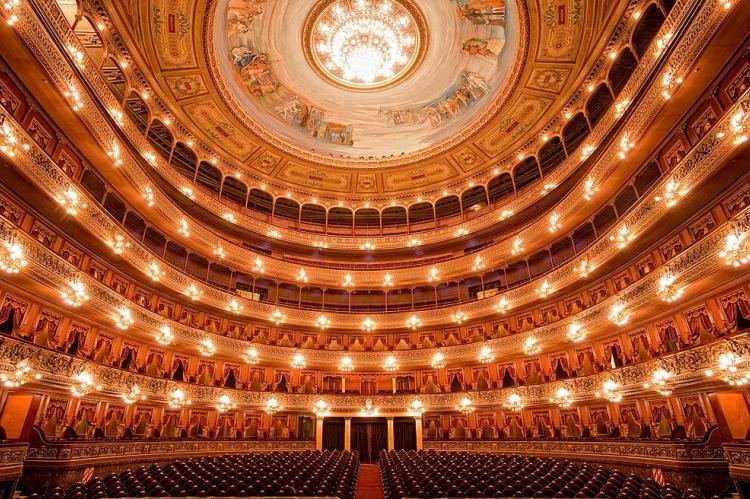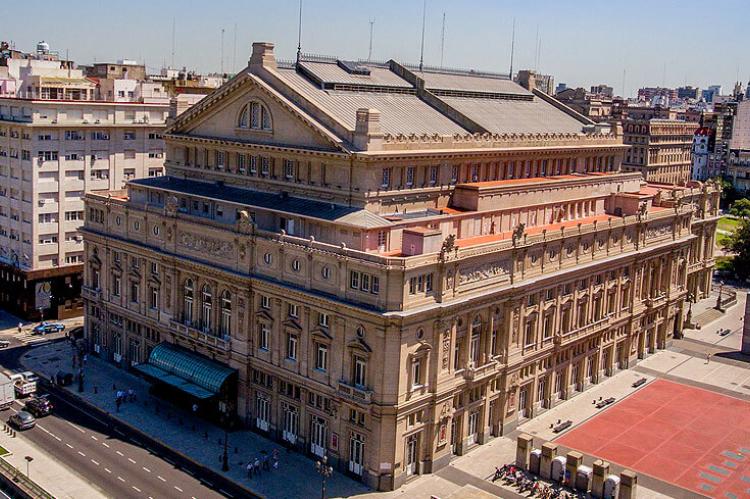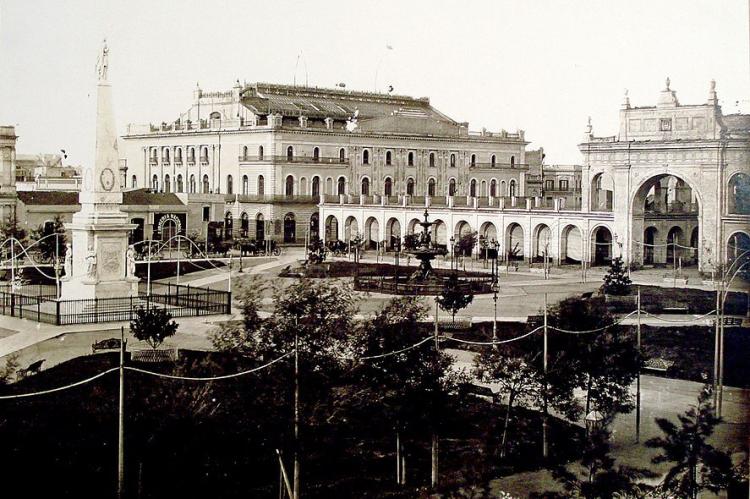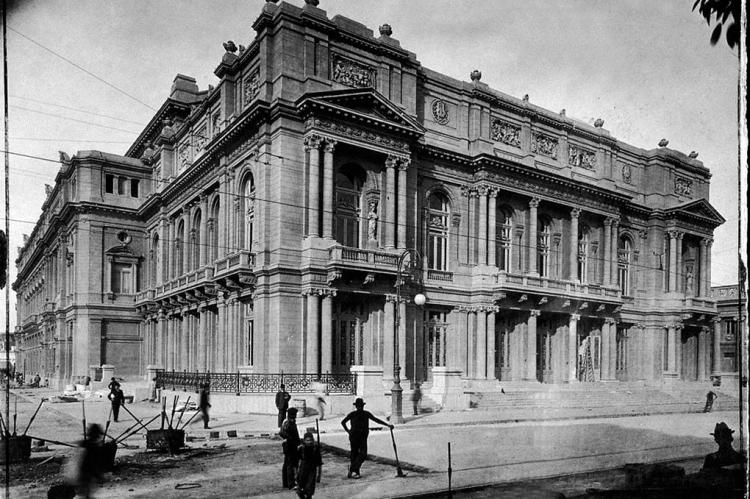Teatro Colón: Buenos Aires' Cultural and Architectural Masterpiece
The Teatro Colón in Buenos Aires, Argentina, is one of the world's premier opera houses. It embodies the city's deep cultural commitment and artistic heritage. Renowned for its architectural beauty, historical significance, and extraordinary acoustics, Teatro Colón has played a central role in both the creative development of Buenos Aires and the global stage of performing arts.
Historical Foundations
The First Teatro Colón
The original Teatro Colón was inaugurated in 1857 in Plaza de Mayo and was designed by the architect Charles Pellegrini. This first theater had a capacity of 2,500 people and quickly became a prestigious venue in Buenos Aires' cultural scene. Its notable features included a gallery designated for those in mourning, reflecting the social customs of the time. For more than 30 years, the theater hosted opera, ballet, and other significant performances. However, by the late 19th century, it became evident that Buenos Aires needed a more modern and grander venue to match its growing ambitions.
Transition to a New Era
In 1888, plans were set in motion to replace the original Teatro Colón with a new, larger facility. The design and construction of the new theater were complex and stretched across two decades. Italian architect Francesco Tamburini originally led the project, aiming to create a structure that could compete with the finest opera houses in Europe. His designs, blending Italian Renaissance and French Baroque elements, laid the foundation for an architectural marvel.
Following Tamburini's death, his assistant Vittorio Meano continued the work until his own untimely death in 1904. Afterward, Belgian architect Julio Dormal took over, overseeing the final stages of construction and completion. The new Teatro Colón opened on May 25, 1908, with a performance of Giuseppe Verdi's Aida, marking a new chapter in Buenos Aires' cultural life.
Architectural Splendor
Design and Structure
The Teatro Colón's architecture is a remarkable fusion of Italian, French, and Greek influences. Its imposing facade is adorned with sculptures, bas-reliefs, and Corinthian columns, emphasizing the grandeur that Buenos Aires sought to project at the turn of the century. The theater's main entrance, located on Libertad Street, is framed by ornate ironwork and features sculptures by Luigi Trinchero, whose works contribute to the building's sense of elegance and permanence.
The building covers an entire city block and is bounded by Avenida 9 de Julio, one of the world's widest avenues, Libertad Street, Arturo Toscanini Street, and Tucumán Street. Its vast scale and intricate exterior detailing make Teatro Colón a standout landmark in Buenos Aires' urban landscape.
Interior Grandeur
Inside, the Teatro Colón is even more magnificent. The main auditorium is designed in a horseshoe shape, a feature typical of European opera houses that enhances sightlines and acoustics. The auditorium can seat 2,487 guests, with additional standing room for up to 1,000 more. Lavishly decorated with gold leaf, red velvet, and intricate murals, the interior transports visitors into a world of opulence and refinement. The frescoes on the dome ceiling, painted by Argentine artist Raúl Soldi, add to the theater's artistic value.
Beyond the auditorium, the theater houses rehearsal rooms, dressing rooms, and an extensive stage complex that allows for large-scale productions. The technical capacities of Teatro Colón are world-class, enabling the staging of traditional and avant-garde performances.
Cultural Significance
A Global Stage for Excellence
From its earliest days, Teatro Colón has attracted some of the greatest performers in the world. Legends such as Enrico Caruso, Maria Callas, Luciano Pavarotti, and Plácido Domingo have graced its stage, cementing the theater's reputation as a leading venue for opera, ballet, and classical music. The resident orchestra and ballet company are internationally respected, and the theater's program features a mix of classical and modern productions.
Teatro Colón has hosted operas, symphonic concerts, ballets, and solo recitals, drawing audiences from across the globe. The theater's importance extends beyond Argentina, making it a central part of the international performing arts community.
Restoration and Revival
The Teatro Colón has faced many challenges throughout its history, including economic downturns, political unrest, and the wear and tear that comes with time. By the early 2000s, the theater was in need of a major renovation. A comprehensive restoration project began in 2006, aimed at preserving the building's historical integrity while updating its infrastructure for modern performances.
The restoration was a monumental task, requiring the replacement of worn-out materials, the restoration of delicate frescoes, and the enhancement of acoustics to maintain the theater's legendary sound quality. After a four-year closure, the theater reopened on May 24, 2010, with a gala event that included performances from Tchaikovsky's Swan Lake and Puccini's La bohème. The reopening coincided with the celebration of Argentina's Bicentennial, reinforcing Teatro Colón's status as a national treasure.
Conclusion
Teatro Colón is more than just an opera house; it symbolizes Buenos Aires' artistic spirit and cultural resilience. From its tumultuous construction to its role as a world-class performance venue, the theater reflects the city's commitment to excellence in the arts. Its architectural splendor, historical significance, and global reputation make it an enduring symbol of Argentine culture. Today, Teatro Colón continues to captivate and inspire audiences, solidifying its place as one of the most important opera houses in the world.
